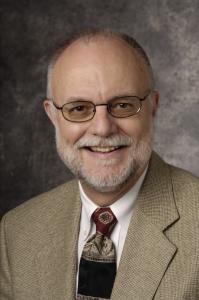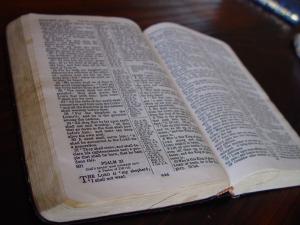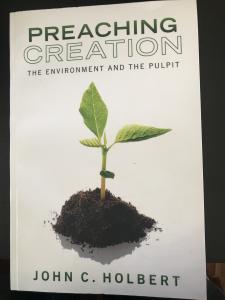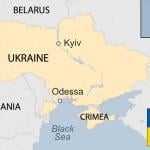 In May, 2012, my wife and I took a trip to Spain, beckoned there by a long-time preacher friend who had lived in Madrid for some years. After spending time with her and her family, we rented a car and drove some 1500 miles through the south of the country. It was a magnificent tour, filled with numerous sites worthy of far more time than we had to give. However, I think for me Cordoba was my favorite, and that for two reasons: the amazing mosque in that city was overwhelming in its history and storied beauty, and the most famous son of the city, Moses ben Maimon, known universally as Maimonides. This rabbi, theologian, philosopher, and scientist, was born in that city in 1135 or 1138, records are inconclusive as to which date is accurate. The epitaph of his life states: “From Mosheh to Mosheh there was none like Mosheh.” In other words, the biblical Moses and the great Moses ben Maimon represented two bookends of the best that Judaism, and the world, has to offer.
In May, 2012, my wife and I took a trip to Spain, beckoned there by a long-time preacher friend who had lived in Madrid for some years. After spending time with her and her family, we rented a car and drove some 1500 miles through the south of the country. It was a magnificent tour, filled with numerous sites worthy of far more time than we had to give. However, I think for me Cordoba was my favorite, and that for two reasons: the amazing mosque in that city was overwhelming in its history and storied beauty, and the most famous son of the city, Moses ben Maimon, known universally as Maimonides. This rabbi, theologian, philosopher, and scientist, was born in that city in 1135 or 1138, records are inconclusive as to which date is accurate. The epitaph of his life states: “From Mosheh to Mosheh there was none like Mosheh.” In other words, the biblical Moses and the great Moses ben Maimon represented two bookends of the best that Judaism, and the world, has to offer.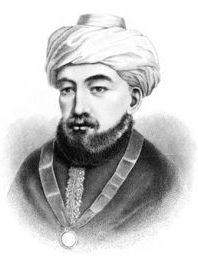
The great mosque of Cordoba, surely one of the world’s most fabulous structures, was begun in 784 by Abd al-Rahman, and served the Muslim community of the city for the next 450 years until the reconquest of Spain by the Christians in 1236, when the building was reconstituted as a Christian church. In the 16thcentury a cathedral chapel was built squarely in the middle of the vast mosque, and though in recent years Muslims have asked the building’s owners if they might pray in the place, that privilege has so far been denied them. It remains a place of Christian worship, but those who visit are treated to one of the world’s most visually stunning examples of Moorish architecture.
Surely, Maimonides, the Jew, worshipped near this building during his early years in Cordoba, since relationships between Jews and Muslims in those days were very close. Stories abound of Jewish masons building Muslim homes and vice versa. Even Christians in this golden age of religious tolerance found ready acceptance among the Jews and Muslims. Moses’ birth came at the very end of that deeply tolerant age. But in 1148, when Maimonides was still young, a Berber dynasty of Muslims, the Almohads, conquered the city and removed the status of dhimmi to all non-Muslims. That is, the tolerance between the three great religions was officially revoked, and Jews and Christians faced the choice of conversion to Islam or exile. The family of Maimonides chose exile, though some have suggested that Maimonides performed a sort of false conversion to Islam before he left the city.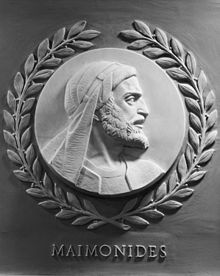
He and his family travelled through North Africa and settled for some time in Morocco; his house may still be visited in the city of Fes. 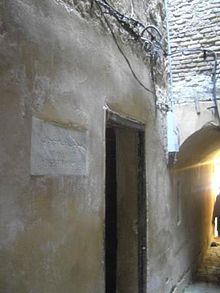 After he had grown to manhood, he went to Egypt and spent much of his adult life there, writing his 14-volume Mishneh Torah, still read and revered by Jewish scholars today and his justly famous Guide to the Perplexed, a philosophical work that addressed the knotty problem of theodicy, that tangled question of how evil can exist in a world created by an all-knowing and all-loving deity. Maimonides was among the very first theologians to take the work of Aristotle and use it as a foundation for what may be called a rational theology, based on science and astronomy. In fact, in several places in Thomas Aquinas’ important Summa Theologica(1265-1274), also a work based on Aristotle, he gives explicit credit to Maimonides as an important precursor of his own work.
After he had grown to manhood, he went to Egypt and spent much of his adult life there, writing his 14-volume Mishneh Torah, still read and revered by Jewish scholars today and his justly famous Guide to the Perplexed, a philosophical work that addressed the knotty problem of theodicy, that tangled question of how evil can exist in a world created by an all-knowing and all-loving deity. Maimonides was among the very first theologians to take the work of Aristotle and use it as a foundation for what may be called a rational theology, based on science and astronomy. In fact, in several places in Thomas Aquinas’ important Summa Theologica(1265-1274), also a work based on Aristotle, he gives explicit credit to Maimonides as an important precursor of his own work.
Obviously, Maimonides was a great linguist, being able to navigate between Hebrew, Arabic, and Greek with ease. Much of his own work was written in Arabic, but has now been translated into nearly every modern scholarly language. After his death in 1204 in Egypt, his remains were moved to the famous Jewish cemetery on the western shore of the Sea of Galilee near Tiberius where an elaborate monument to his life exists today. Jews affectionately call him the Rambam, an acronym based on “Rabbi Moses ben Maimon.”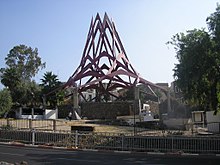
As I visited an ancient synagogue in Cordoba, not too many steps from the Mosque-Cathedral, I could easily imagine the Rambam as a boy learning his first Hebrew in or near that place, and at the same time talking easily with Muslim and Christian friends in Arabic or perhaps some sort of early Spanish, a mixture of Hebrew, Arabic, and some romance language, later called Ladino. Then upon entering the magnificent mosque, with its forest of graceful arches, seeming to spread for acres inside the vast structure, I stood for a time in awe of the building and its openness to the world of Jew, Muslim, and Christian. And then I came upon the Christian chapel dropped right in the middle of the mosque, and that startlingly different architecture, the high baroque of the 16thcentury, spoke volumes about the end of tolerance in that place. That edifice was a fitting conclusion to the cruel edict of Ferdinand and Isabella in 1492 that evicted all Jews and Muslims from their lands. The very same year that they sponsored the fateful voyages of the Italian Christopher Columbus to the New World, they ejected thousands of their citizens from their state in the attempt to make Spain a purely Christian place. I felt only a deep sadness as the memory of a wonderfully tolerant land faded into the soaring baroque arches of the high Christian altar, cocooned within the marvelous mosque.
And here I am in the 21st century USA, where we have a president seemingly intent on “purifying” the nation by expelling any number of our residents and restricting those who would join us here. America remains one of the world’s greatest experiments, attempting to shape an open society, a tolerant society, that includes significant numbers of people from many lands, speaking languages that I can not even name, let alone understand. I wonder what that young Maimonides would have thought, as he conversed so easily with persons unlike him, if he confronted leaders who were trying to limit his concourse with these his friends? How did he feel when he was forced to flee his native land for places he did not know? What would he have said to Ferdinand and Isabella when they drove the Jews and Muslims from Spain? What would he say to Donald Trump whose apparent bigotry and xenophobia have led him to denigrate and demean literally millions of citizens and non-citizens of this country?
When I stood in the great mosque of Cordoba, I witnessed the hope of tolerance and the despair of bigotry all at once. Because I am a Christian, I cling to the hope of tolerance, an openhearted possibility that all might come together in loving embrace. I think the Rambam would join me in that hope.
(Images from Wikimedia Commons)



